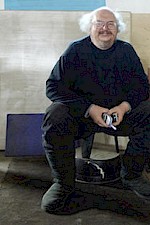No Cost Sound Improvement – Move Your Seat, Get Better Sound
Sometimes the simplest solutions are the best. The ways speakers and rooms interact have a bigger effect than all your choices in electronics combined as long as the electronics are not distorting. Or, another way to say this is moving a speaker a foot can often have a bigger impact on sound quality than spending $1000 to change speaker wire and interconnects. This does not feel intuitive; but time and again, it has been confirmed for me when a buyer experimented with a different location and the sound dramatically changed - sometimes for the better and sometimes for the worse.
Your seating location
Your seating location can also have a dramatic impact of on sound quality. We will discuss those effects, why they happen, and offer some suggestions that may improve your listening experience at little or no cost.
The location of your ears to the nearby walls has a similar effect to the effect of the location of your speakers in relation to their nearby walls. As an example, if you are sitting with your speakers in front of you and your ears 12 inches from the wall behind you, the bass below about 140 Hz will be twice as loud as most of the music above that frequency. If you have some micro-monitors with a dramatic lack of bass, this boost could be a real help. On most systems, it will add heaviness in voices, particularly male voices.
If you are sitting 24 inches from the wall behind you, the boost is below about 70Hz. This can give some real foundation to mini monitors for decent rock ’n roll bass. (I’m not certain if you can ever have too much 60 Hz bass for the punch of a kick drum or low strings of an electric bass.) You can double this doubling of bass boost if you have the small monitors on stands about 2-3 feet from the front wall as well as the listening spot near the back wall. I have been to many a demonstration where the bass from the small speakers was quite amazing when I sat in the assigned sweet-spot near the back wall.
If your ears are four feet from the wall behind you, the boost is below 35 Hz. This is rarely a problem and usually extends the bass. Going beyond four feet, the frequency goes lower and lower.
If you have full-range speakers and your room layout is such that the main listening position is close to the rear wall, you may need to move the speakers away from the front wall to eliminate the double boosting of the bass. The boost is operating at the distance-dependent frequency and all the range below it. So, you can use your listening location as well as your speaker location to get the deepest, smoothest response from the whole system.
Beware the center of the room.
While sitting near the rear wall can extend the deep bass, sitting halfway between the front and rear walls will reinforce and cancel over a wide range of frequencies. These peaks and dips are because of the room resonances alternately adding and subtracting. The peak-to-dip ratio can often be 20 dB even from a speaker with a perfectly flat response. Nature’s Golden Ratio (1 to 0.6180…) is often the best choice since few frequencies (and only fairly high ones) have nodes near that point.
In conclusion, set your listening spot carefully to use the room-boost to extend your system’s deep-bass and avoid excess reinforcement in the mid-bass. Your sitting location can have nearly the same effects as speaker placement. You can optimize your system’s performance with a bit of experimentation. Dealers are professionals and will have optimized their systems for their rooms to push what they want to sell. You must do your evaluation and optimization in your room to hear what they will actually sound like in your room.
So, if you feel something lacking – or overbearing – in your audio system, if you can, spend some energy and move the chairs around a bit before you start spending real cash. You’re likely to be both surprised – and pleased.
See ya in two weeks…
And for now, Enjoy & Good Listening,
John
Subscribe to Ohm News & Views to get the latest posts in your inbox
John Strohbeen Author
John Strohbeen was the President and Chief Engineer of Ohm Acoustics from 1978-2023.


